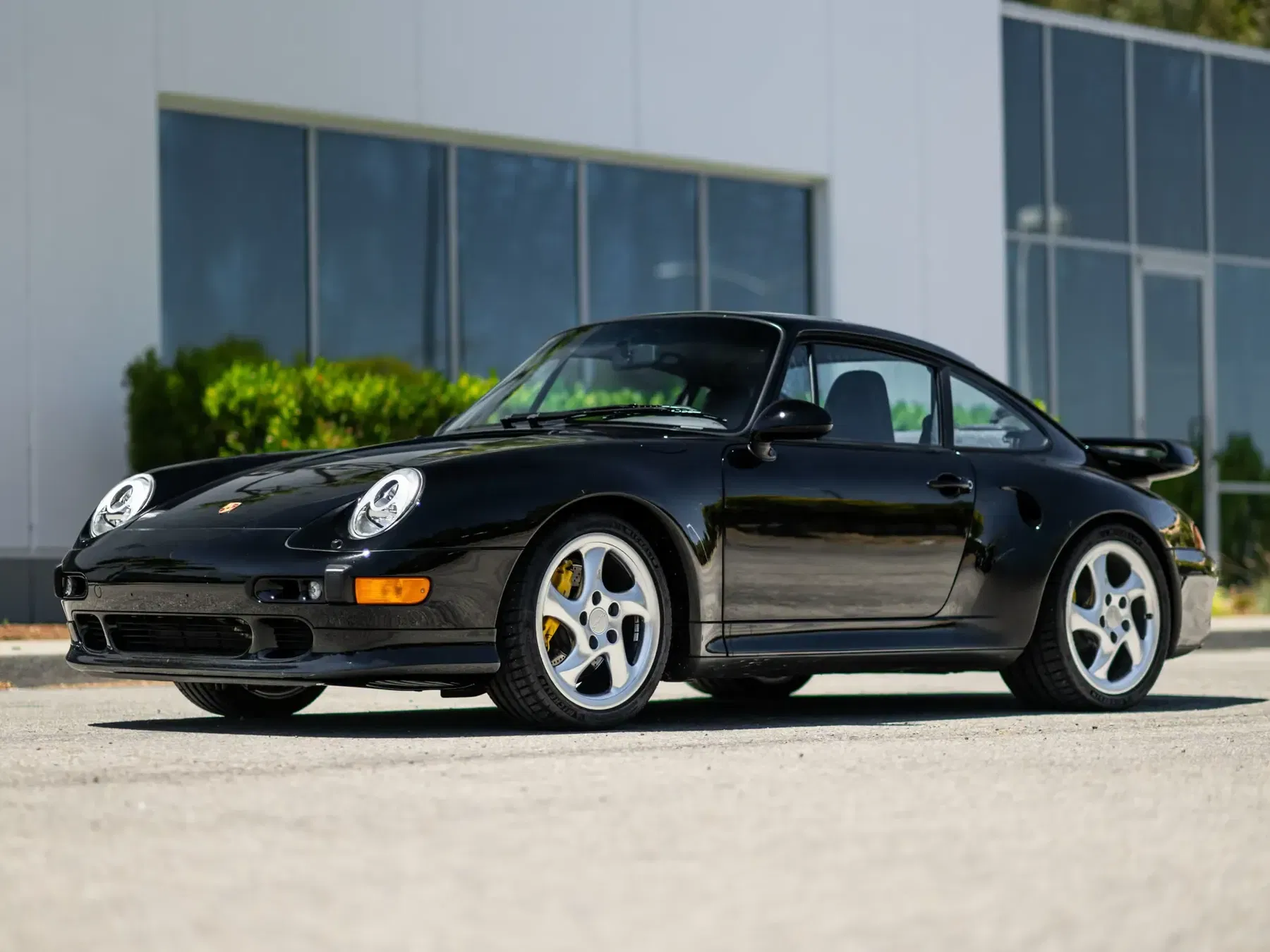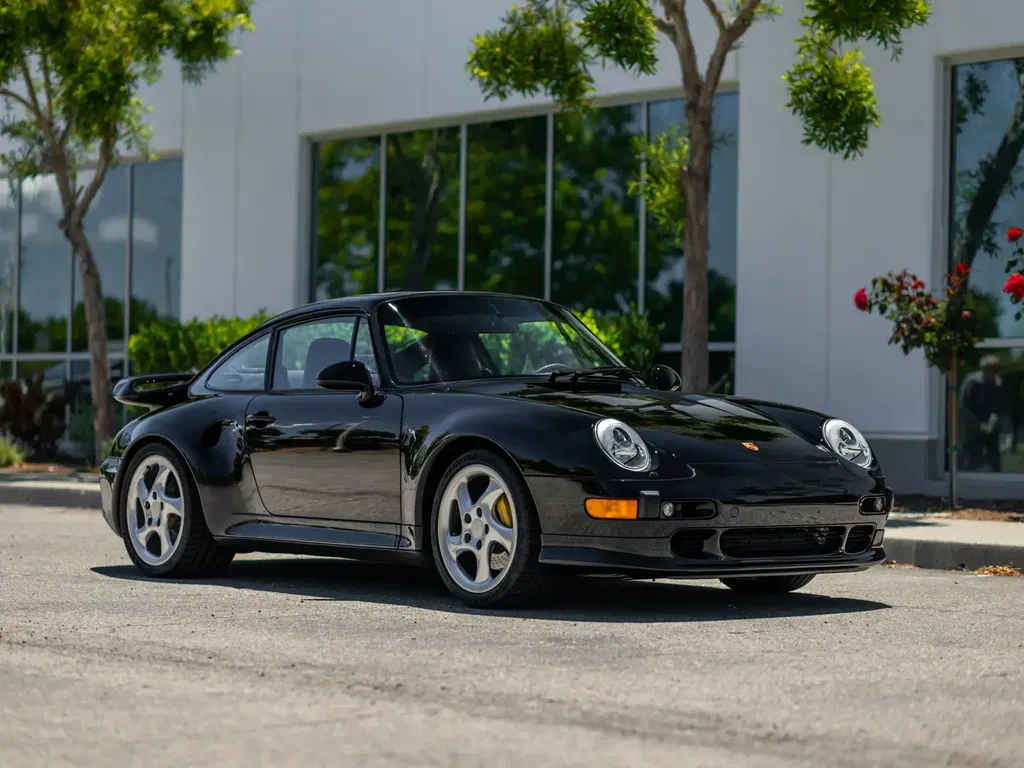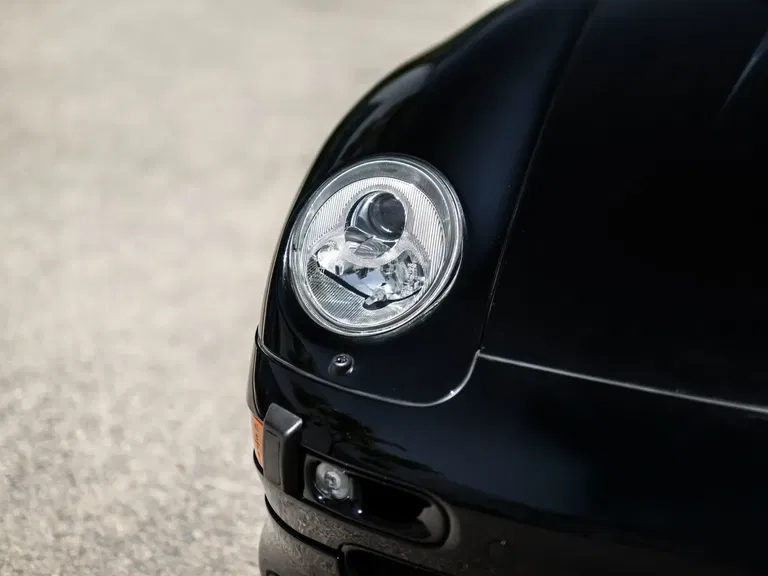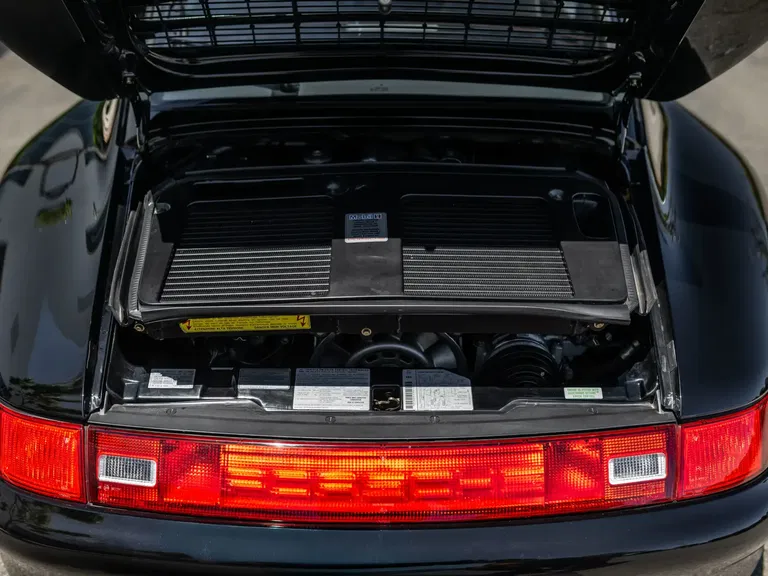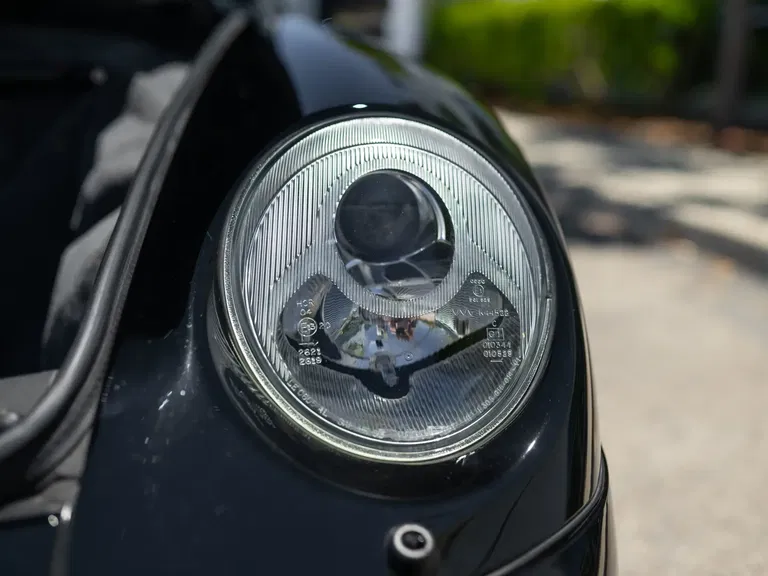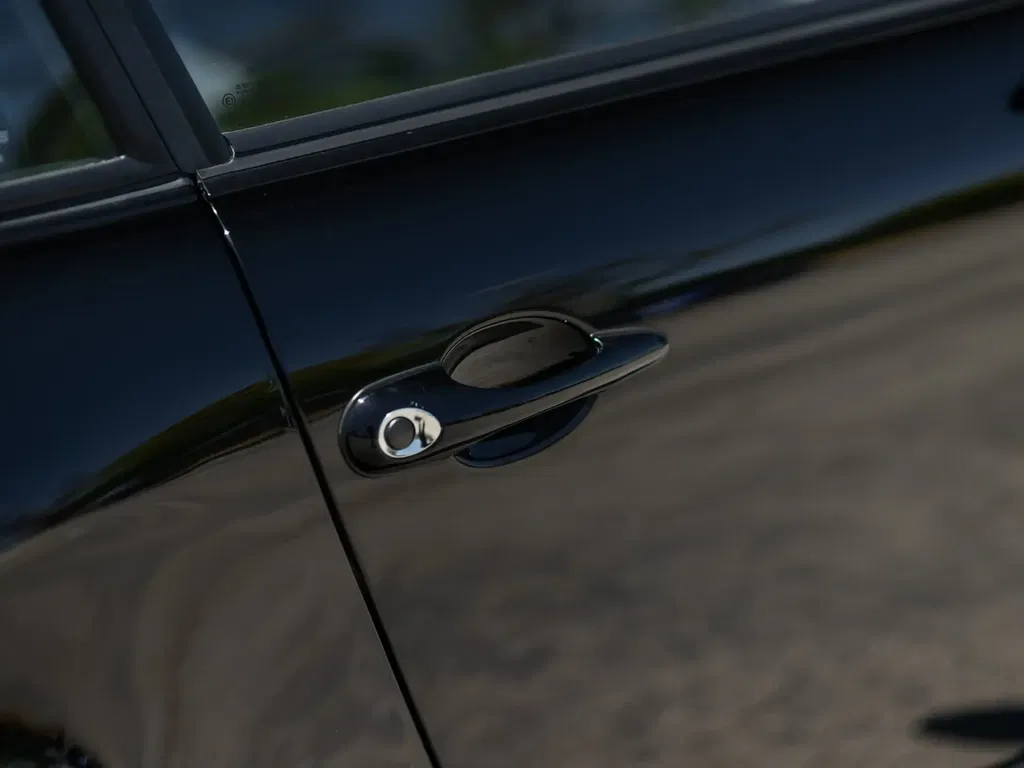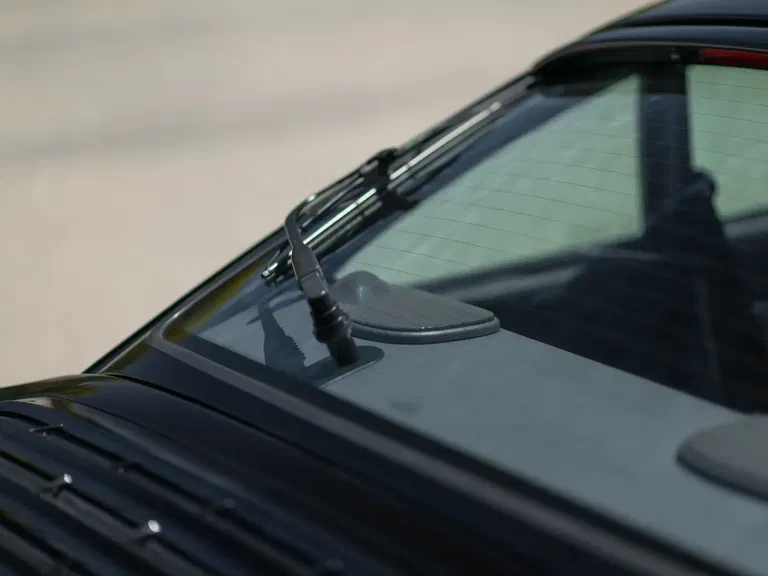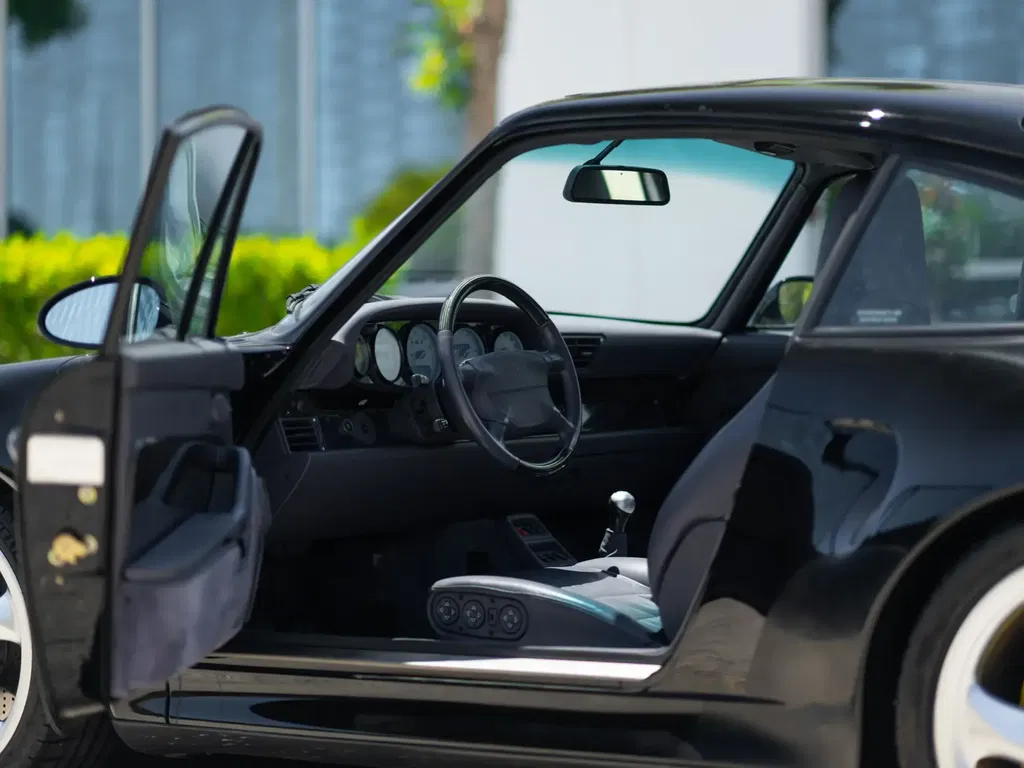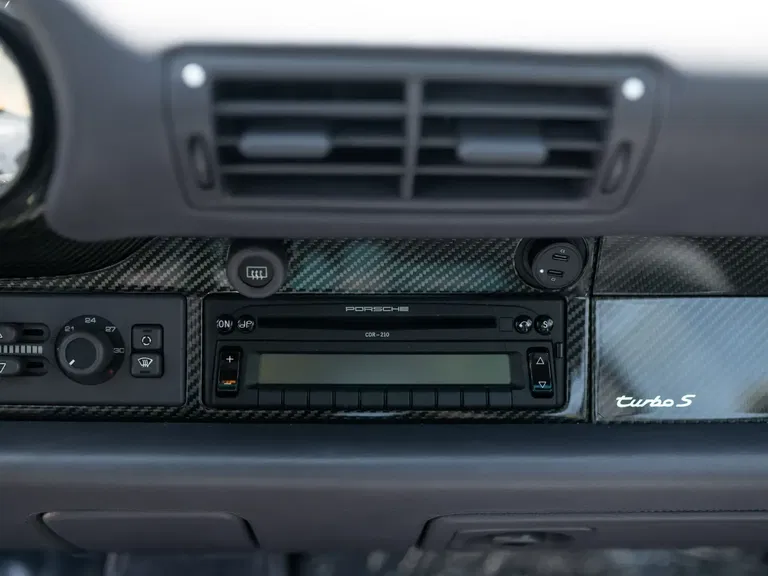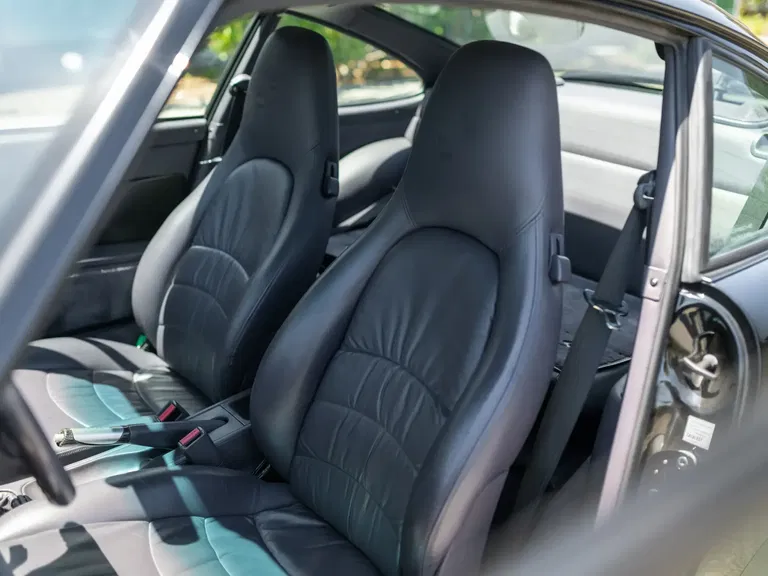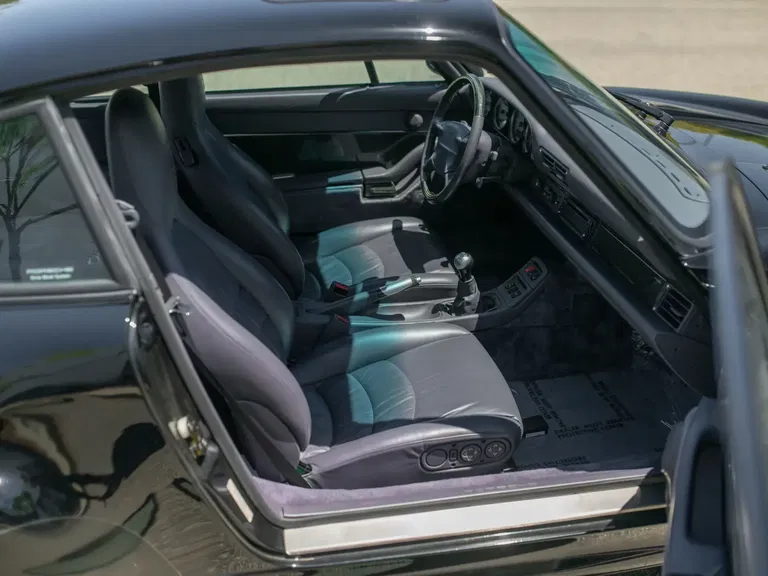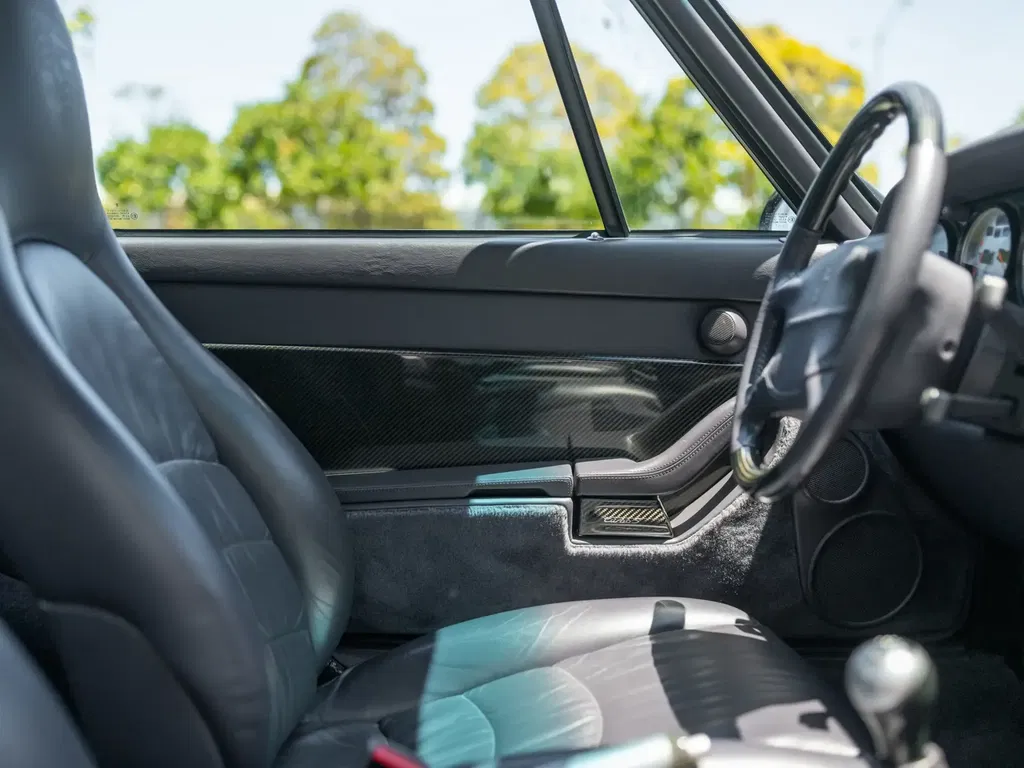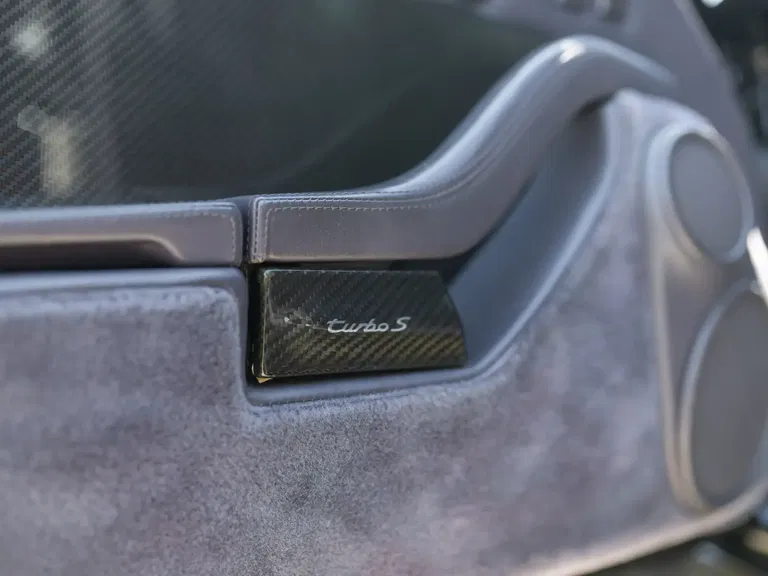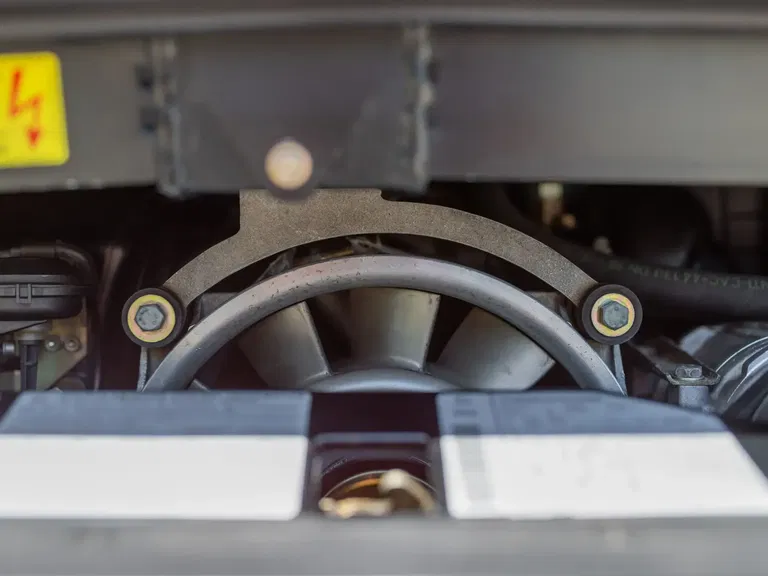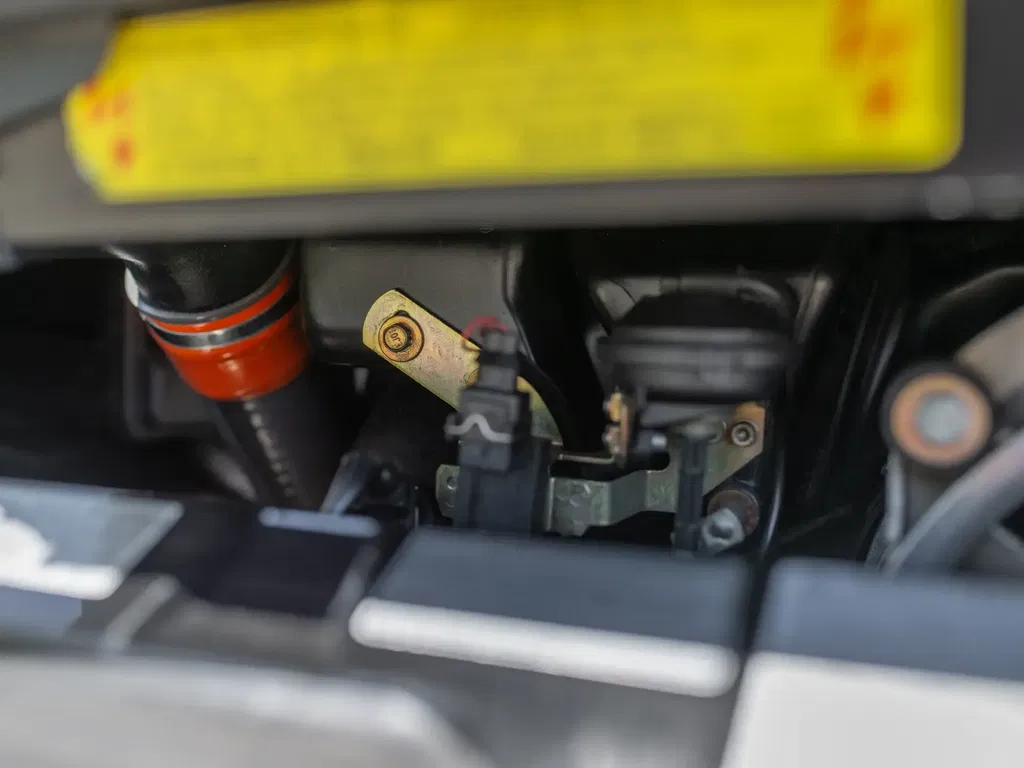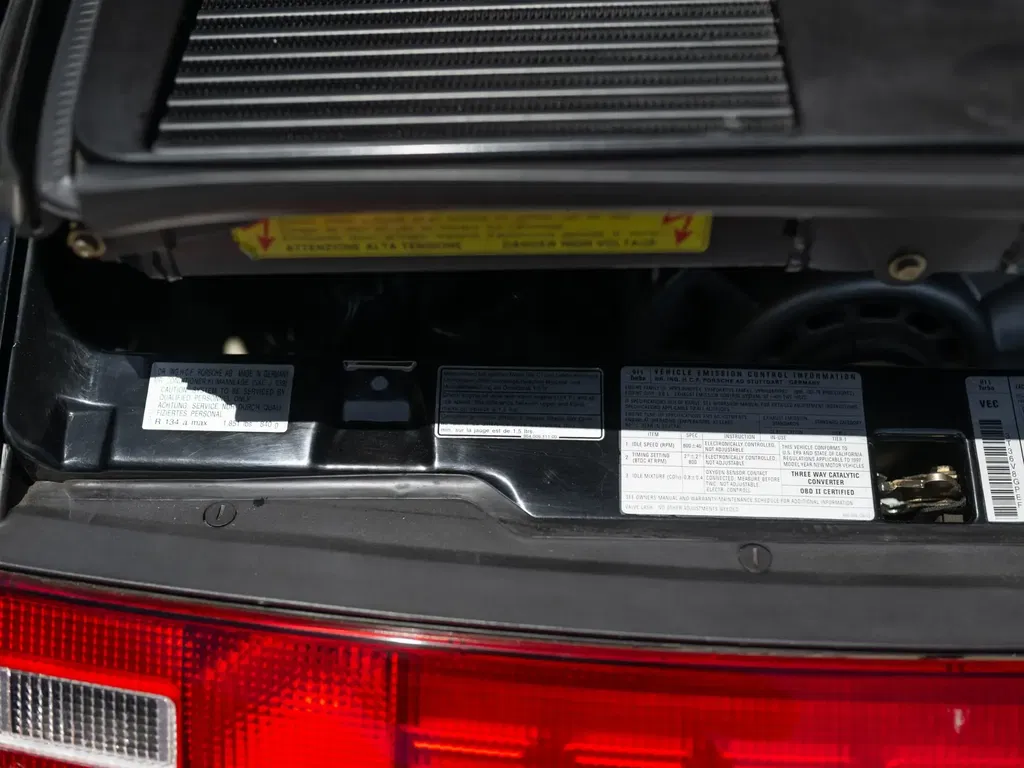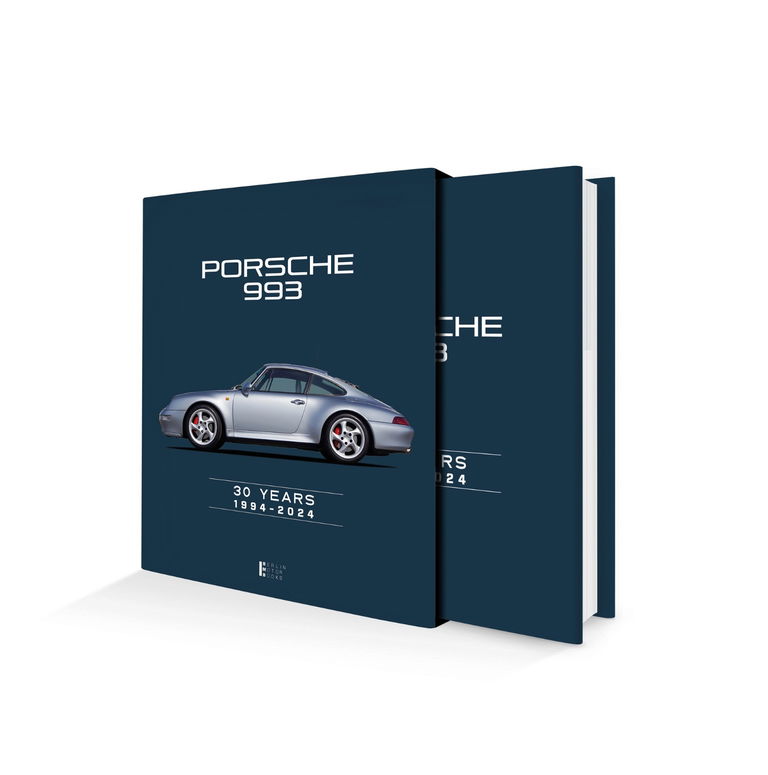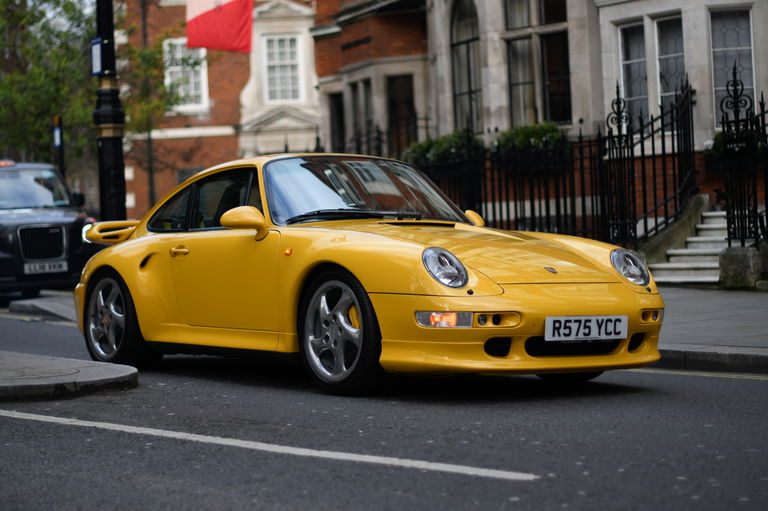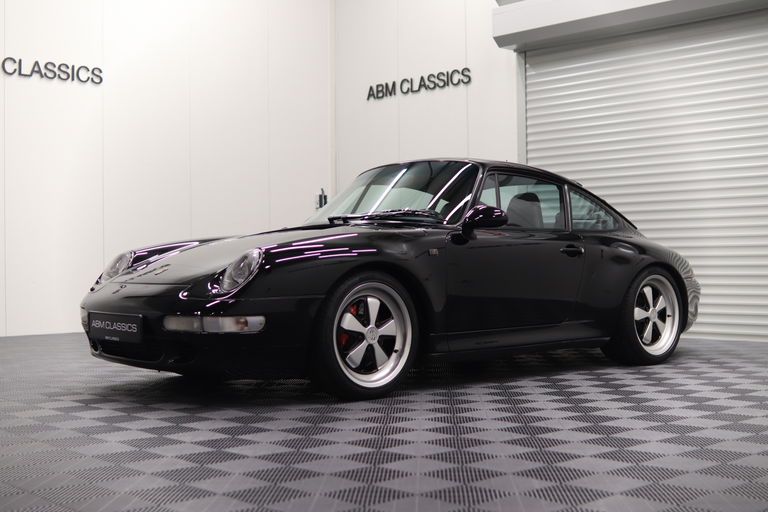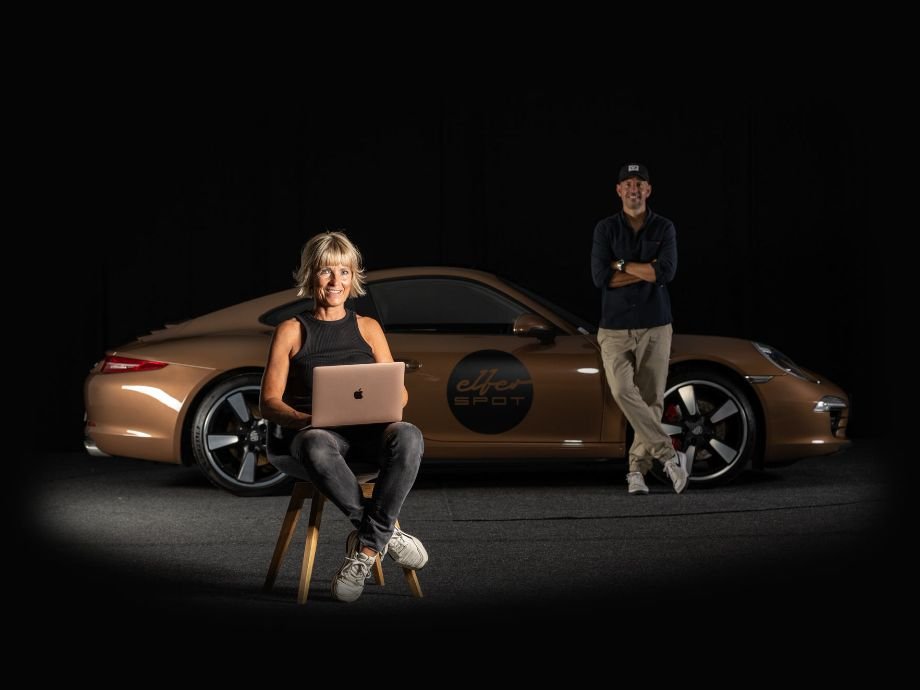Porsche built its reputation and enduring legacy on air-cooled engine performance, starting with the 356. This was followed in 1964 by the arrival of an evolutionary six-cylinder successor called the type 901 and badged as the 911. One of the most successful stories in automotive history, with a continuous production run of over 60 years, the 911 offered a near-perfect blend of timeless looks, balanced handling, chassis and engine reliability, and performance perfectly suited to both the road and the track.
As air-cooled 911 development continued, Porsche occasionally debuted limited-production, high-performance variants to widespread acclaim. These included the Carrera RS in 1973, the type 930 Turbo in 1975, the all-wheel-drive variant of the type 964, and, finally, the ultimate iteration of air-cooled technology, the type 993 Turbo S—recognized by many enthusiasts as the ultimate air-cooled Porsche.
The type 993 Porsche 911 Turbo S provided a dramatic and fitting final chapter for the air-cooled era, being the last air-cooled 911 Turbo built by Porsche. A true limited-production model, 183 examples were manufactured for North America, each carefully and uniquely prepared by Porsche’s Exclusive department with bespoke features and numerous engine and chassis upgrades. Powered by a 3.6-liter flat-six engine featuring an alloy crankcase and cylinder heads, the Turbo S received larger twin KKK K24 turbochargers for instant throttle response and a new Bosch Motronic engine-management system modified to handle the additional output, which increased to 424 horsepower at 6,250 rpm for the US market.
Many of the 993 Turbo S’s technical advancements were adapted from the legendary 959, including electronically controlled all-wheel drive, a first for the Porsche Turbo model. Stopping power for the Turbo S came from larger cross-drilled, multi-piston, ventilated disc brakes. To prevent brake fade during intense, extended driving sessions, Porsche added discreet air ducts near the fog lamps on the front valance and on the rear fenders above the wheels.
Yellow brake calipers helped identify the Turbo S, along with a new “Aerokit Turbo II” front end and an enlarged twin-blade fixed rear wing with integrated vents feeding air to the intercooler. A widebody design helped accommodate larger 18-inch alloy wheels, while the engine sang through four exhaust pipes. An upgraded six-speed manual transaxle helped the Turbo S achieve 0–60 in 4.2 seconds on its way to a top speed of 184 mph.
This attractive Turbo S features factory-correct finishes of Black (A1) over Rubicon Grey Special Leather trim. An accompanying report from VIN Analytics lists numerous options, including a carbon fiber and leather steering wheel, digital sound package, supple leather front and rear, leather parking brake tray, lumbar support for the driver’s seat, and footwell lighting. Production of the car was completed in March 1997 before its eventual sale to the Seattle area. Over the following two-plus decades, it has seen sparing use as evidenced by the fewer than 6,900 miles showing at the time of cataloguing. In October 2024, Porsche Marin in Mill Valley, California, performed a comprehensive major service costing over $12,500, including an A/C recharge, new clutch pressure accumulator, fluid changes, spark plugs, air and fluid filters, and a set of four new Michelin Pilot Sport tires.
The serious collector seeking an exceptionally uncommon, elegant, and powerful turbocharged, all-wheel-drive Porsche could do no better than this fine example—the final evolution of Porsche’s air-cooled tradition, heralding an end to what many aficionados consider as the 911’s greatest era.
